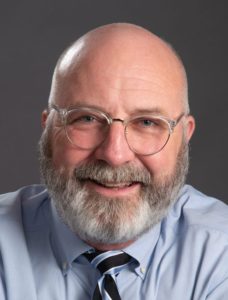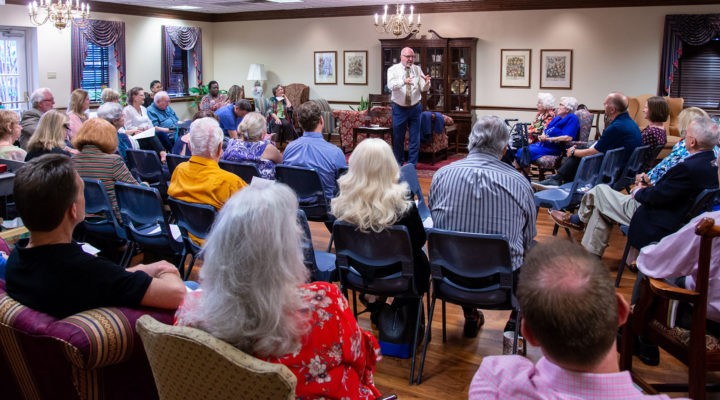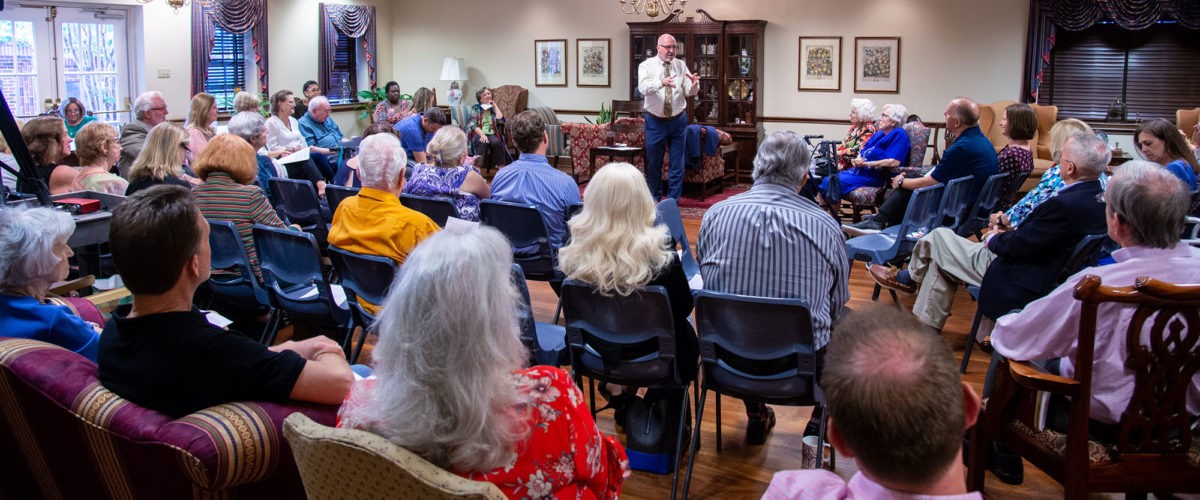A decade ago, while on a sabbatical research project, I visited 15 churches of various denominations across the United States that bore only one common trait — they were in some way “traditional” churches.
Even among that group, one of the most shocking things I learned was how much of an outlier traditional Baptist churches remained in keeping adult Sunday school classes alive. When the pastors I interviewed asked me about my own church and what we did by way of adult education, I would explain that about 85% of our typical Sunday worship attendance also participated in Sunday school every week. They were stunned. And I was shocked that they were shocked.

Mark Wingfield
Among all the non-Baptist churches I visited, most felt lucky to have two or three adult small-group Bible studies that met throughout the year or part of the year. The notion of a year-round, full-scale, all-ages Sunday school program was unimaginable to them. And yet for us — and for many other traditional Baptist churches like us — it was still working.
That was pre-pandemic. And now I wonder how the landscape will have changed yet again as more traditional churches that remained closed to in-person gatherings the longest begin to regather.
That came to the forefront this week after I wrote a news article about churches reopening. One line from veteran church consultant Carol Childress seemed to spark the most conversation in my circle of friends and colleagues. That’s the line where Childress suggested that among four indicators of churches that will navigate a post-pandemic world successfully is “an infrastructure for community built on anything other than the traditional Sunday school model.”
To some, Childress might as well have denied the virgin birth. That’s how sacred Sunday school remains in some of our circles. And I have to say that in my own local church context, I am one of those defenders of Sunday school. But I also realize that my experience is an outlier to the rest of American Christianity.
I would argue that in traditional churches like ours, adult Sunday school has been the glue that kept people together during the pandemic. And in some ways, that sentiment must be true in all churches, depending on whether they have Sunday school or life groups or whatever. We’ve known for a long time that the way to build large churches is to support small groups within the larger body. People need personal connections.
“In traditional churches like ours, adult Sunday school has been the glue that kept people together during the pandemic.”
One of the secrets about America’s megachurches is that the back door often is busier than the front door. Yes, the big-box churches bring in lots of new people — mainly from other churches and not through conversions, by the way — but they also lose people just as freely. The larger the church, the more important some kind of small-group connection is to assimilation and retention.
Over the past couple of decades, we’ve witnessed a sea change in American Protestant churches about the nature of small groups. Traditional curriculum publishers have adapted by offering all manner of short-term studies and book studies and non-traditional curriculum. And I know of some churches where no curriculum is needed for adult small groups because they’re not really Bible study groups so much as support groups.
The impersonal nature of online worship during the pandemic has increased the need for personal connections through small groups. As I’ve previously written, one of the things lost during the pandemic has been informal interaction — like visiting with someone in the hallway at church or staying after the service to chat with a friend, or learning about a prayer need through a passing conversation.
While much worry has been expressed about whether people will come back to church in general, we probably should be concerned particularly about whether people will come back to small groups at church — and how they will engage. My prediction is that a lot of folks will want to keep participating virtually, which means using technology to create a hybrid approach to church small groups.
“While much worry has been expressed about whether people will come back to church in general, we probably should be concerned particularly about whether people will come back to small groups at church.”
There are multiple reasons for this, including (1) We’ve learned how great it is not to have to get fully dressed and out the door early on a Sunday morning; (2) We’ve developed new family habits that will be hard to break; (3) People who live far away have connected and reconnected with churches through online worship and small groups and likely will want to stay connected; (4) Some people will still be wary of virus transmission.
You might think the group most likely not to come back to church is senior adults, and I’m pretty sure you’d be wrong about that. The most at-risk group for churches to lose is families with children and youth.
Even before the pandemic, it was increasingly hard to get families to devote two hours a weekend to church — meaning attending both worship and small groups like Sunday school. Lots of these families already were making choices to attend worship only or to attend a small group only, but not both.
After more than a year of not having to get kids dressed, fed and in the car to church, there’s not going to be a huge pull to return to the previous stress of a Sunday morning. And here’s where Childress’ point comes home to roost even for those of us in traditional churches that have had success with Sunday school: The pandemic has changed what people are willing to do with their time.
As much adaptation was required in the early days of the pandemic shutdown, that’s likely how much adaptation is going to be needed going forward as well. Churches that already have reopened to full programming are reporting reduced numbers of people coming back.
This is a time for innovation more than frustration, however. Here are some questions for consideration:
- What matters? Imagine you were designing church programming from scratch (because in a way you actually are). What are the essentials your church must do to fulfill its mission?
- What doesn’t matter? If ever there were a time to kill off dead church programming, this is it. Muster the courage not to restart things that ought to have gone away even before the pandemic.
- Who have you lost? During the pandemic, some people have fallen away. Do you know who they are? If not, how can you find out?
- Who have you gained? Many churches have gained new members during the pandemic — folks who never knew the way things were before. How are you going to assimilate them, including locals and those who have found you online?
- What will people participate in? I know this is looking at the problem from the other side of the table than most churches usually occupy. We have theological reasons for wanting people to do certain things we think they ought to do, after all. That kind of obligatory attendance was on the skids before the pandemic, and those skids now have been greased into express exit ramps. People are not going to come back to a church schedule out of obligation. Figure out what matters to the people in the church before you assume everything will return to the old ways.
- What will people lead? Church ministries are only as good as your ability to recruit solid leaders for them. If you can’t enlist leaders, there’s a pretty good chance you won’t draw attendees either. We have little data yet on how volunteerism in the church has been affected by the pandemic.
- What can be shortened? One of the myths pandemic worship has exploded is that a Sunday morning worship service must be at least a full hour in length. Turns out you can do a lot in 45 minutes if you plan well and cut out the chatter. Corollary truth for preachers: Whatever your sermon length was before the pandemic, don’t expect anyone but your mother to listen to you for that long anymore. We’ve had a year of shorter sermons and the ability to fast forward when you get on a tangent. Tighter, more focused preaching is needed now more than before.
- What can continue to be done remotely? Exhibit A here is committee meetings. We’ve learned the joy of not having to drive to the church or stay late after church for committee meetings. I see little reason ever to have routine in-person church committee meetings in the future.
- How might the post-pandemic church build relational community? Despite everything said above, pandemic-starved people are craving real community but they’re not willing to waste their time on stuff that doesn’t pay off. This reminds me of the wisdom of some landscape architects who intentionally don’t build sidewalks into their projects at first but wait to see where people naturally beat down paths. Then they put sidewalks or trails in those places. Take a look at what your congregants did on their own during the pandemic to maintain community — and in the days immediately after being vaccinated — and encourage more of that.
- What is the smartest way to provide essential discipleship training for children and youth? Again, before the pandemic, traditional Sunday school for preschoolers, children and youth were experiencing half-time attendance at best. It already was difficult to teach a complete scope and sequence of the key Bible stories when half the class was present one week and another half the next. Someone needs to come up with a better way to do this, and I’m still not sure what it is.
- How will you provide variety within your context? Someone could read all the suggestions above and surmise that the answer moving forward is to strip down all church programming to the bare minimum and drive everyone into the same funnels. That would be disastrous. Even though shut up at home for months, we’ve had options. We could attend any church or Bible study group we want online. We’ve had thousands of choices of what entertainment to watch on TV. We could have all manner of food delivered to our front doors. The answer for churches may not be to do less but instead to do more shorter and smarter and on-demand.
The church finds itself at a moment of excitement but also vulnerability as the doors reopen and we wonder who will walk through them. Whether you’re in a rural or urban setting, big church or small church, there are preparations to make. Just don’t expect to pick up the church calendar from 2019 and assume it will work in this new world.
Mark Wingfield serves as executive director and publisher of Baptist News Global. He has taught adult Sunday school for most of the last 35 years and still teaches an intergenerational class today.
Related articles:
More churches plan reopenings cautiously, joyfully and with flexibility
Church leaders, please don’t waste your transition crisis | Opinion by Bill Wilson
Your church after COVID: Restart, refresh or relaunch? | Opinion by Bill Wilson
What if they don’t all come back to church? | Opinion by Jason Koon
Remember that time you were teaching Sunday school on Zoom and a cat entered the screen?
Church curriculum publishers experience reduced sales due to COVID


